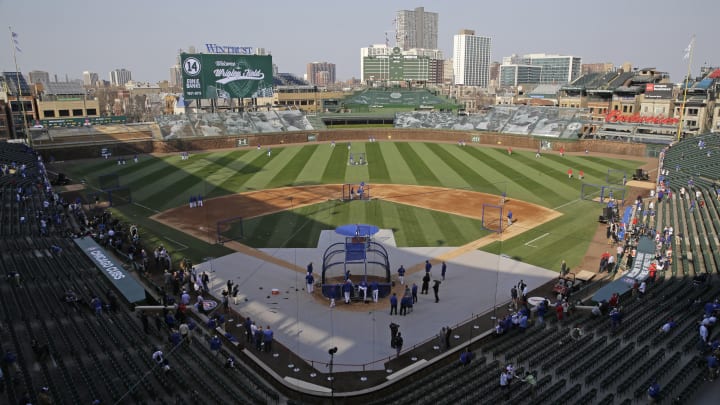For ballpark design, it could be different game in future

CHICAGO (AP) Picture this.
It's Opening Day 2050 and you are at Tomorrow Park cheering on your favorite team against the dreaded Cubs as they begin yet another championship defense.
You peer out toward the giant video board to catch a replay of a dazzling catch, only this isn't one of those steel monoliths. It's a hologram, and when the game's over, it goes away.
Sound far-fetched? Well maybe not with the major role technology is playing in the way ballparks are designed these days.
''The market is changing on an almost annual basis, especially with the technology,'' said Earl Santee, founder of architecture firm Populous. ''The technology is actually changing the experiences that folks have at these venues. It's hard to predict.''
How about an entire facade going electronic?
Mike Wekesser, sports design director for architecture firm AECOM, mentioned the annual Festival of Lights in Lyon, France, where images depicting its heritage are projected onto centuries-old buildings and the city gets transformed for four days.
How would that work at a ballpark?
''The exterior skin could be constantly changing, be a reflection of what's going on in the stands or going on within the community,'' Wekesser said.
It would allow teams to project images of their players, broadcast interviews, discuss the most recent game, promote the history and direction of the franchise. And, of course, it could serve as ad space.
''At some point, we might just be looking on our phone or hand-held device so you don't need the big board,'' Wekesser said.
In an era where bigger is better when it comes to video boards - ''the Jerry Jones effect,'' he calls it - Wekesser does not see them going away or becoming a holographic image anytime soon.
Nor does NYU sports business professor Robert Boland. But he can envision seats with touchscreen monitors being installed, giving spectators access to the producer's feed from the truck along with more statistics and maybe even bringing gambling to the stands.
''Or some sort of interactive community where (you can say) `the next pitch will be' or the `next hit will be,''' he said.
Even in the next few years, Santee anticipates noticeable changes at ballparks - video boards with 4K screens, for one. Another is virtual reality clubs that might allow fans to try to replicate that diving stop they just saw J.J. Hardy make, for example.
''You could walk into it and all three dimensions of the room would be part of the game,'' Santee said. ''You could be the guy in the outfield. One wall is the outfield, you've got fans on three sides. You go in there and you feel like you are completely part of the game.''
That's part of a design trend away from large club spaces. In their place are more gathering spots that are smaller in capacity, allowing teams to provide a greater variety of experiences at the ballpark.
It's about catering to a younger and more diverse crowd, allowing fans to connect both face to face and electronically. And it's about providing a unique experience.
''The population of the United States is changing, becoming more international,'' said Drew Berst, sports business development leader at AECOM. ''That means our stadiums now when it comes to attendance are relying less on existing, generational fanship where one generation passes along to the next generation the love of the team.''
It's also about melding the stadiums with the community, making it a place where people go year-round and not just on game days. It's about concerts, weddings and bar mitzvahs, meetings, team stores, restaurants, museums and farmers markets.
Stadiums in general are becoming more like public buildings in some cities, where the concourses are almost intertwined with the street system, allowing people to stroll through whether they're going to a game, grabbing a bite or just passing through.
For ballparks, it's more about the surroundings than creating a retro look. In Miami, for example, that meant a modern design for the Marlins' home.
The Braves are creating a sort of ballpark village with their move from downtown Atlanta to the suburbs, their plans calling for restaurants, bars, an office building, an indoor concert and convention venue and a hotel.
In some ways, they're trying to re-create what the Cubs have with a vibrant atmosphere in and around the ballpark, which is undergoing an extensive upgrade.
Cubs chairman Tom Ricketts insisted one thing won't change at Wrigley - or elsewhere.
''The fact is baseball's social,'' he said. ''Baseball is the game you go to when you're with people you want to talk to, and that's unlike any other sport. The fact is it'll largely be the same. I don't think social media or smartphones are gonna change the baseball experience.''
